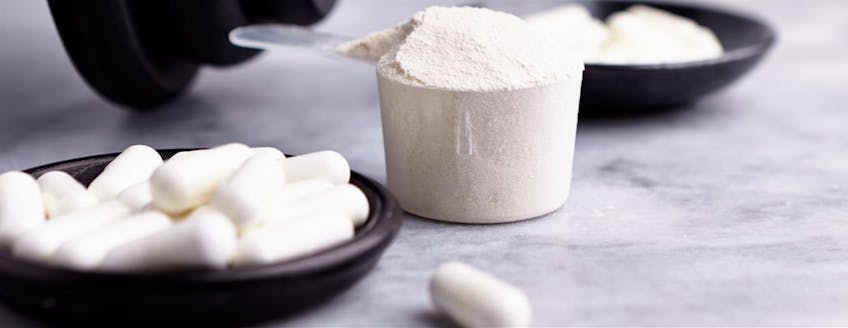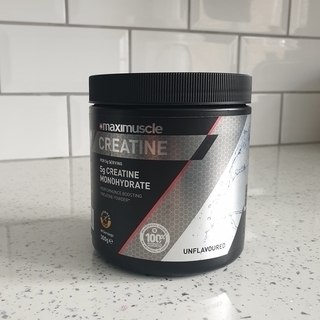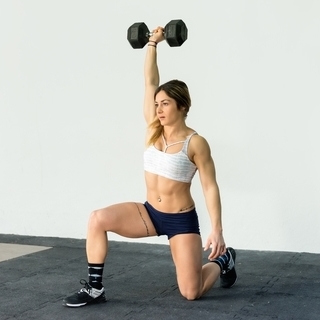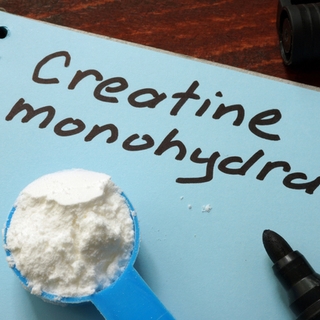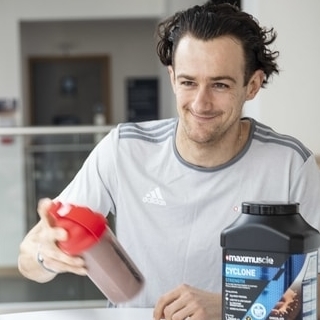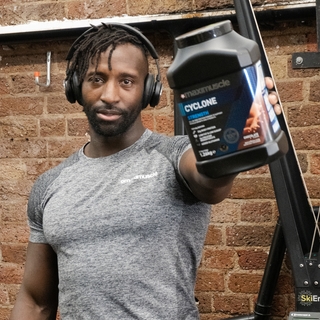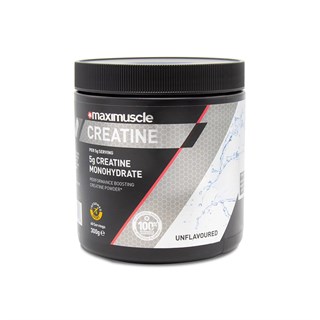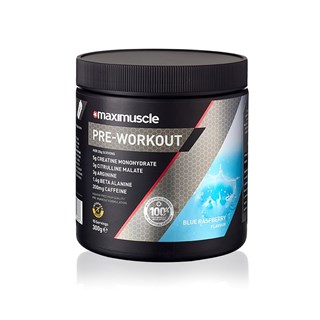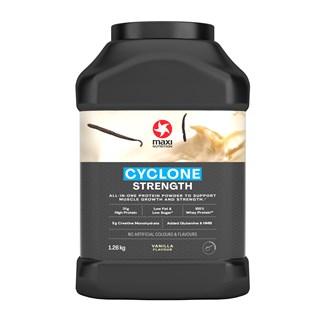Is Creatine that magical supplement?
“Creatine is one of the most popular nutritional ergogenic aids for athletes. Studies have consistently shown that creatine supplementation increases intramuscular creatine concentrations, can improve exercise performance, and/or improve training adaptations. Research has indicated that creatine supplementation may enhance post-exercise recovery, injury prevention, thermoregulation, rehabilitation, and concussion and/or spinal cord neuroprotection (ISSN, 2017 page 1).”
I’m Gareth Nicholas, Head Nutritionist at Maximuscle, maybe you’ve used creatine before, perhaps you’ve heard of it but not yet convinced to try it, or perhaps I’ve already confused you, just by mentioning the word creatine. Whatever you understanding let me take you through the world of creatine.
What is Creatine?
Creatine is a non-protein amino acid compound found in red meat and seafood. 95% of creatine found in the body resides in skeletal muscle; with the remainder (5%) found in the brain and testes. For more on what creatine is, click here.
What does Creatine Do?
Within the muscle, creatine is phosphorylated into a high-energy molecule, Phosphocreatine (PCr). PCr plays a vital role in the re-synthesis of Adenosine Triphosphate (ATP) and particularly useful during maximal bursts of energy, like sprinting. The muscle also holds a small pool of free creatine, which is available to phosphorylate when required. Like all storage tanks, the muscle can only store a certain amount of creatine, coupled with the constant use; replenishment is required to maintain balance.
Typically, the body per day requires 1-3g of creatine. Around half of the required amount is obtained from dietary sources. The other half is created from amino acids within the liver and kidneys. Before we look at how supplementation can support performance, if dietary sources are low, (vegetarian or vegan diet) or perhaps a problem with natural creatine creation; creatine supplementation may be beneficial.
Performance by creatine – How to use creatine
Even in a meat eaters diet, creatine saturation levels are around 60-80%, highlighting the potential for supplementation. It is important that your dietary changes are based on body weight and in this case representative of the muscle mass. The more muscle mass you have the higher the creatine storage capacity. To facilitate saturation, consume 0.3 grams of creatine per kg of body weight, ~5g per day, 4 times per day. If however saturation levels just need to be maintained, perhaps post the loading phase, then 5-10g per day will do the job.
Research has used lower creatine protocols, for example 3g per day for 28 days, but as performance benefits will only materialise once muscle saturation is achieved; this method would take long to realise any benefits. For more on creatine protocols, check out how to use creatine
Key Point on creatine
In a nutshell, we need creatine. It’s naturally present or derived from dietary sources. Creatine is vital for energy production, especially during high intensity short burst explosive exercise. Supplementation is not essential, but if you want to ensure muscle saturation or improve energy (ATP) regeneration and muscular performance, creatine could be the answer.
Which form of creatine
From a supplementation perspective, many forms of creatine exist. Please see our article on types of creatine. Creatine monohydrate remains the number one. It has been the most commonly researched source of creatine and no studies to date have shown that any other form of creatine is superior.
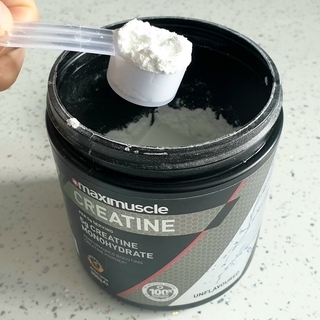
When to take creatine
A topic of debate is whether creatine should be ingested alongside other nutrients. It would appear that adding creatine to either carbohydrate and/or protein improves creatine retention. Probably due to slowing of digestion or improving metabolism. But it’s likely that you are not completely devoid of these nutrients during consumption, so it’s probably neither here nor there. Remember it is all about saturation levels, as such there’s no key time within the day to take creatine. The important thing is that you are taking it every day, irrespective of whether you are training or it is a rest day.
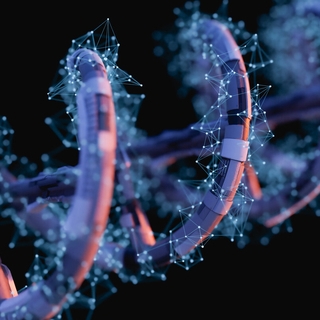
The benefits of creatine – Science says
Don’t just believe us, take a look at the science. Creatine specific studies have shown a number of potential benefits, including:
- Increased single and repetitive sprint performance
- Increased work performed during sets of maximal effort muscle contractions
- Increased muscle mass & strength adaptations during training
- Enhanced glycogen synthesis • Increased anaerobic threshold
- Possible enhancement of aerobic capacity via greater shuttling of ATP from mitochondria • Increased work capacity
- Enhanced recovery
- Greater training tolerance
However, to avoid being complicit with the regulations, the European Food Safety Authority (EFSA) only recognise two approved health claim for creatine.
- Creatine increases physical performance in successive bursts of short-term, high intensity exercise.
- Daily creatine consumption can enhance the effect of resistance training on muscle strength in adults over the age of 55.
More proof required? The International Society of Sports Nutrition, The American Dietetic Association and the American College of Sports Medicine all conclude that creatine is an effective nutritional supplement that can provide performance benefits in a number of sports and in individuals exercise, such as resistance training.
Is Creatine Safe?
In a word, Yes! Over a thousand studies, together with billions of creatine servings ingested, and the only side effect to creatine, has been weight gain. The literature has shown that even with high dosages (up to 0.8g per kg of bodyweight) consumed over years, pose no health risks. As with all things, there has been many anecdotal reports and some of these are not completely unfounded, especially if an individual has an undiagnosed condition, such as renal dysfunction. However, for the healthy population, creatine is an extremely safe and effective ergogenic aid.
Key Points to Creatine
- Creatine is the most effective performance enhancing nutritional supplement to increase high intensity exercise capacity and lean body mass during training.
- The quickest way to see results is to consume 0.3g of creatine per kg of body weight across the day for 5-7 days (Loading phase), followed by a maintenance load of 3-5 g per day for a minimum of 3-4 weeks.
- Creatine monohydrate remains the number one source for supplementation.
- Consuming creatine with carbohydrate and/or protein may help the muscular uptake of creatine.
- Creatine is safe to consume consecutively for years without any adverse effects.
Creatine in our products
All of our creatine products contain creatine monohydrate. For Cyclone, each serving contains Creapure, a high-quality branded source of creatine monohydrate. For the loading phase it may be worth using our single source creatine monohydrate powder alongside Cyclone and Pre-Workout. That way you will be balancing your creatine intake with the other dietary sources, such as protein. If your goal is to improve strength and performance at high intensity exercise then creatine is definitely worth trying. It could be just the added support you need to take your training to the next level.





